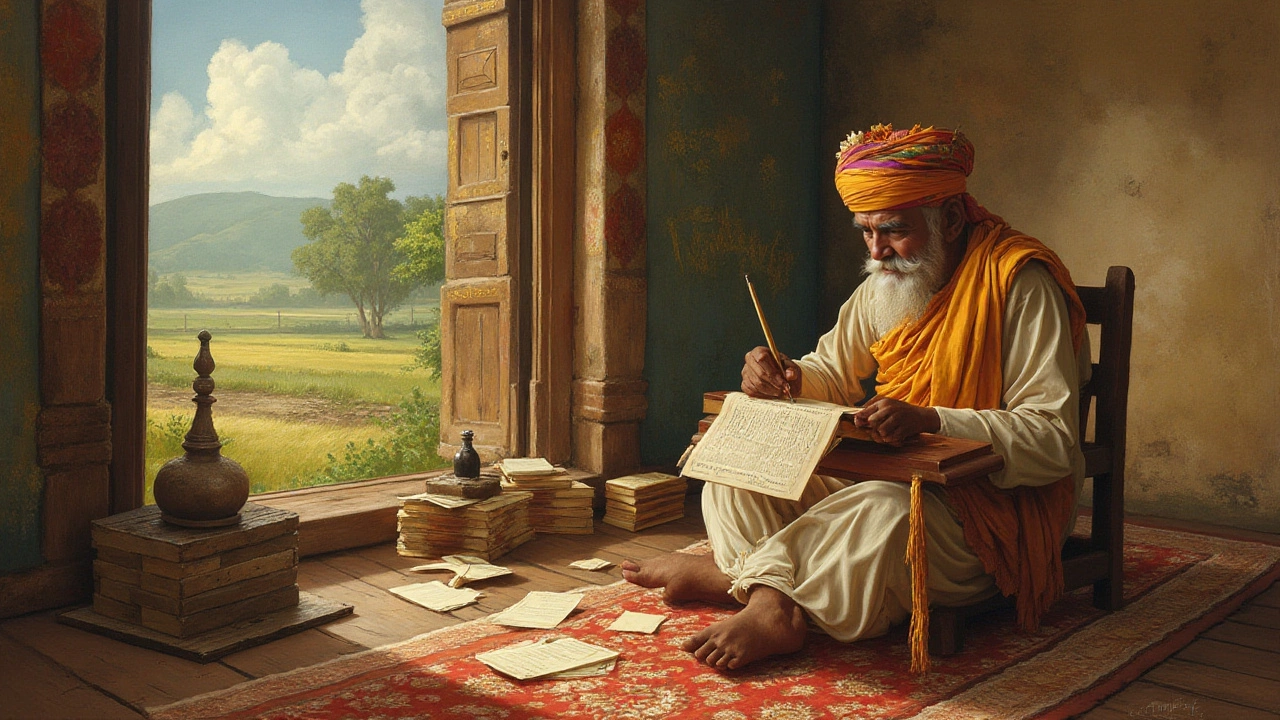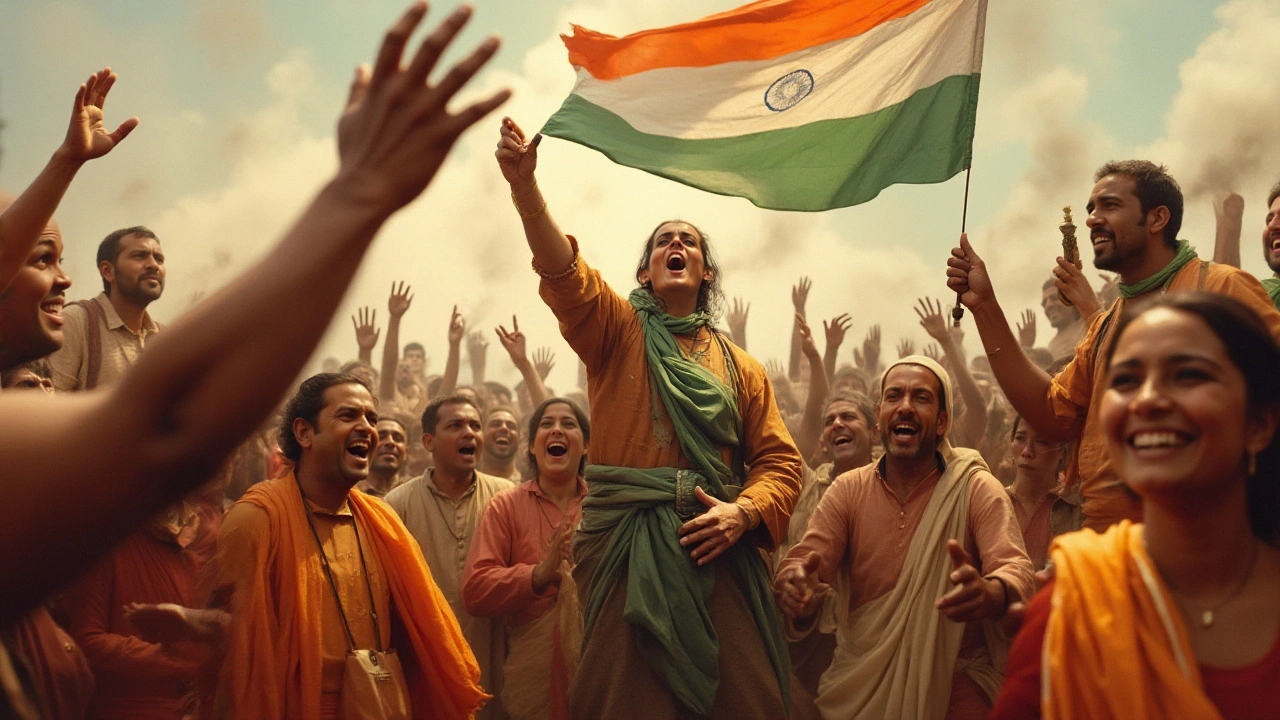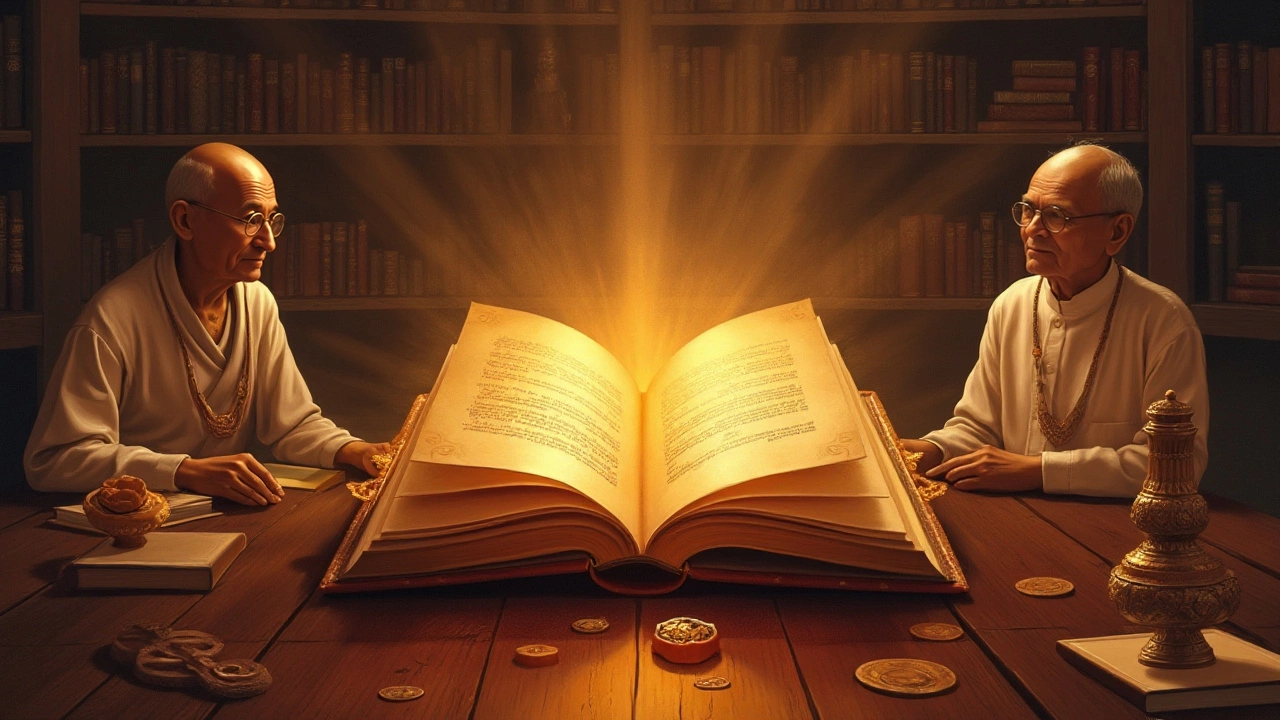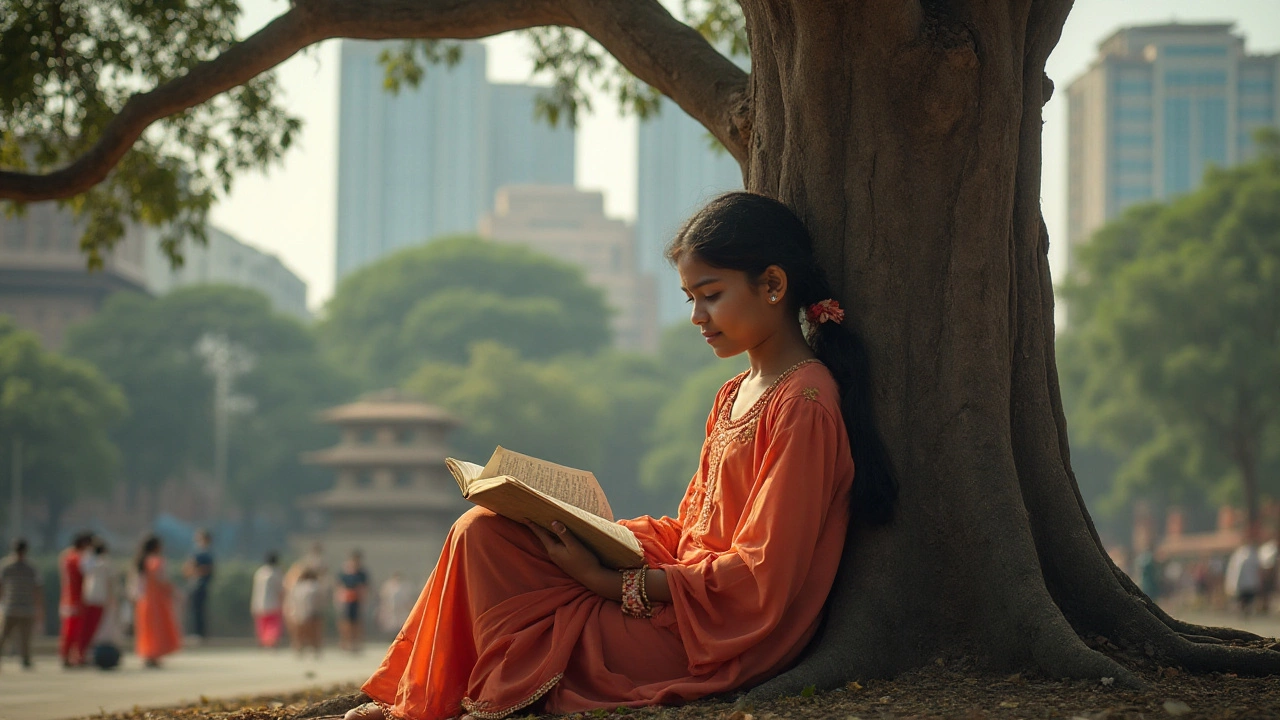
'Vande Mataram,' a phrase that resonates deeply within the heart of India, is more than just words. It is a symbol, a call, and a historic echo that has left its mark on the country’s journey toward independence. At its core, 'Vande Mataram' is a poem penned by the celebrated writer Bankim Chandra Chattopadhyay in the 19th century. But is it more than a poem? Its transformation over the years suggests so.
Originally written in Bengali and Sanskrit, 'Vande Mataram' became the rallying cry for many during India’s fight for freedom. Its verses celebrated the rich, natural beauty of India and invoked a sense of patriotic fervor among those who sought liberation from colonial rule. Today, its importance transcends its literary roots, embedding itself in the fabric of India's national identity not just as a poem, but as a revered song. Join us as we uncover the unique story of 'Vande Mataram,' exploring its compelling journey from a literary piece to an emblem of national pride.
- Origins of 'Vande Mataram'
- The Poetic Structure
- Cultural Impact and Historical Significance
- Transformation into a National Symbol
Origins of 'Vande Mataram'
The tale of Vande Mataram begins in the late 19th century, during a time when India was under colonial rule. Bankim Chandra Chattopadhyay, a prolific writer and intellectual, penned this inspiring poem in 1875. Written in a mix of Bengali and Sanskrit, it first appeared in his famous novel 'Anandamath' in 1882. This period was marked by instability and unrest as the Indian populace grappled with foreign domination. Amidst this backdrop, Bankim sought to instill a sense of national pride and unity through his writings. 'Vande Mataram,' with its rich and evocative imagery, called upon Indians to cherish their motherland, portraying it as a divine and nurturing entity deserving devotion and respect.
The rhythm and the lilting quality of the poem quickly captured the imagination of the masses. Not merely an artistic piece, it was Bankim's response to the socio-political climate of the time and his hope for India’s resurgence. The term 'Vande Mataram,' meaning 'I praise thee, Mother,' juxtaposed reverence for one’s mother with that of one's country, drawing a clear line between personal and patriotic duty. Chattopadhyay’s choice of language itself was revolutionary; by intertwining Sanskrit with the everyday vernacular, he ensured that the poem reached diverse audiences, thus facilitating its adoption across different regions.
Behind the poetic verses lay an astute understanding of the power of words. During this era, intellectual and cultural awakenings were gaining momentum, and Bankim’s work fueled the fires of the burgeoning nationalist movement. Many leaders, like Aurobindo Ghosh, recognized its potent force and adopted it as an anthem to galvanize public sentiment. Its lines were sung at political gatherings and freedom rallies, embedding it deeply in the national consciousness.
The journey from text to anthem was propelled by its powerful message. The poem's essence resonated with the Indian psyche as it tapped into an age-old reverence for nature and motherland found in Indian spirituality. Noted historian Bipan Chandra once observed,
'In its sheer simplicity, 'Vande Mataram' has articulated the yearnings of millions for liberty.'This belief, coupled with the poem's musical adaptability, later led Rabindranath Tagore to set its lyrics to music, enhancing its appeal and accessibility.
The journey continued well into the 20th century, as 'Vande Mataram' morphed into a larger symbol of resistance and hope. As echoes of the poem reverberated throughout the Indian subcontinent, it became a cornerstone of the independence movement. For many freedom fighters, it was not only a means to challenge British rule but also a call to unite under a common cause. Its unfettered patriotism permeated through various speeches and writings, aligning with the spiritual and ideological underpinnings of leaders striving for an autonomous India. As one delves into its origins, it becomes evident that the birth of 'Vande Mataram' was not an isolated literary milestone, but a pivotal force in shaping India's historical narrative.

The Poetic Structure
The poetic structure of 'Vande Mataram' is both intricate and deeply evocative, contributing significantly to its powerful impact. Written in a mix of Sanskrit and Bengali, the poem captures the lush landscapes and spiritual essence of India. Bankim Chandra Chattopadhyay employed a sequence of evocative imageries, depicting rivers, fields of golden crops, and serene, evergreen groves to create a vivid celebration of the motherland’s beauty. This captivating imagery not only stirs the imagination but also instills an emotional connection to the land it describes.
Bankim’s choice of Sanskrit was a purposeful nod to India's classical heritage, whilst the use of Bengali was a tribute to his mother tongue. The poem’s rhythmic cadence is a masterpiece of metrical composition, which aligns with the nuances of raga—an element of Indian classical music—enhancing its lyrical beauty. This structure allows the poem to transcend mere written words, encouraging a musical expression that resonates deeply with those who sing it. Notably, the first two stanzas of the poem were eventually set to music and became the national song of India. Rabindranath Tagore, another literary titan, composed the melody at the 1896 session of the Indian National Congress.
A standout aspect of its structure is how Bankim constructs the sublime image of 'Bharat Mata.' Here, the land itself becomes deified, offering a brilliant blend of patriotism and devotion. The use of personification transforms geographical features into a divine form worthy of reverence and respect. This fusion between nature imagery and divine personification is what sets 'Vande Mataram' apart, endowing the poem with a timeless appeal and significance in Indian culture. A profound quote by Tagore reflects this sentiment:
"The essence of the poem transcends time and context; it is not just words but the voice of the country's soul."
Furthermore, 'Vande Mataram' became a literary blueprint that inspired countless other works in the genre of Indian nationalistic poetry. Its succinct yet dense verses have fueled and motivated poets and artists alike to craft new creations that echo the spirit of this iconic piece. Weaving through the poem's structure is a theme of unity and strength, combined with an appreciation for the land's splendor. These elements are tightly knitted into its poetic fabric, illustrating how the structure itself stands testament to the enduring legacy of 'Vande Mataram' in both literary and cultural spheres.

Cultural Impact and Historical Significance
The poem 'Vande Mataram' by Bankim Chandra Chattopadhyay is woven into the cultural and political tapestry of India. Composed in 1875 and later included in his novel "Anandamath," it emerged as a beacon of hope and inspiration during the Indian freedom struggle. The powerful imagery of the motherland as a goddess in the verses stirred deep emotions, mobilizing millions across the nation. This poem was more than an artistic expression; it was a revolutionary catalyst that reflected a collective yearning for freedom and unity against the colonial forces.
A significant moment in history was when 'Vande Mataram' was first sung publicly by Rabindranath Tagore at the Calcutta Session of the Indian National Congress in 1896. This rendition marked its transition from literature to an anthem of resistance. During the struggle for independence, the song's potent symbolism resonated with people from all walks of life, becoming synonymous with sacrifice and passion. It was considered a sacred hymn in the timeline of India’s fight against colonial powers.
At the 1929 Lahore session of the Indian National Congress, when the push for complete independence was made, 'Vande Mataram' was recited, evoking a sense of unwavering determination. It has since been acknowledged as a guiding light leading Indians towards self-reliance and integrity. Vande Mataram became a soundtrack to a broad-spectrum independence movement. In times of turmoil, leaders such as Mahatma Gandhi and Jawaharlal Nehru spoke of it with reverence. Gandhi once said, "The song has an ineffable charm because of its perfect fusion of patriotism and spirituality."
Gandhi once said, "The song has an ineffable charm because of its perfect fusion of patriotism and spirituality."
Even post-independence, the cultural impact of 'Vande Mataram' remains profound. It continues to be performed on numerous national occasions, heralding the same enthusiasm and reverence that galvanised the nation decades ago. Generations have grown up with its spirited verses, imparting lessons of devotion, courage, and resilience. The song exemplifies the unity in India’s diversity, transcending linguistic and regional barriers and resonating with the universal ethos of love for the motherland. Its legacy as a symbol of national pride and identity endures, fostering a sense of heritage among the people.
In the complex landscape of Indian politics, there have been some debates around 'Vande Mataram,' but its influence is undeniable. Various artistic renditions have continued to breathe new life into it, showcasing its versatility and relevance. The Indian music industry, for instance, has frequently drawn inspiration from its themes, weaving its essence into modern narratives. As a piece of literary greatness, it highlights the potent power of words and art in shaping societal change. Today, it stands as a testament to the resilient spirit of India—a perpetual tribute to the historical path paved by countless unsung heroes and their remarkable journey toward nationhood.

Transformation into a National Symbol
The metamorphosis of Vande Mataram from a mere poetic composition to a beacon of national pride is a journey steeped in history and emotion. Initially part of Bankim Chandra Chattopadhyay's novel 'Anandamath,' the poem was not widely recognized outside literary circles. However, its powerful invocation of patriotism, coupled with an intrinsic reverence for Mother India, struck a resonant chord amongst those yearning for freedom from colonial rule. The impact of its words grew significantly in the early 20th century, coinciding with a burgeoning nationalistic fervor across the subcontinent.
During the Indian freedom struggle, Vande Mataram found its true calling. The Indian National Congress, a crucial player in the freedom movement, adopted it as a national song at the forefront of rallies and gatherings, further popularizing it across the nation. It's fascinating how this poetic anthem galvanized millions with its depiction of India's vast, lush geography as a maternal figure deserving of love and protection. Its verses were often recited at protests and meetings, becoming a source of inspiration and unity, bridging linguistic and regional divides within the vast landscape of pre-independence India.
The poem's transformation into a national symbol wasn't solely due to its lyrical beauty; it was the emotional connection it forged with Indians across demographics. Figures like Rabindranath Tagore and Mahatma Gandhi endorsed its sentiment, acknowledging its power to stir the soul. Gandhi himself was reported to have said, "It is a song of patriotism which defies time." Their endorsements lent the song a place in history books and hearts alike, ensuring its place as an integral part of India’s independence narrative. The ardent use of Vande Mataram during pivotal moments of the struggle underlines its significance as more than just an artistic achievement but a rallying cry for unity and resistance.
On the eve of India's independence, there were debates over adopting 'Vande Mataram' as the national anthem. Eventually, 'Jana Gana Mana' was chosen for inclusivity across India's diverse religions and cultures. Nevertheless, Vande Mataram wasn't sidelined; it was conferred the status of the national song as a tribute to its role in the freedom movement. Its adoption into several Indian languages allowed it to become more accessible and revered across the nation. Despite the debates around its suitability as a national anthem, its influence remained undeniable, symbolizing patriotism and cultural pride.
To this day, the legacy of Vande Mataram is upheld. It is deeply ingrained in the educational and cultural framework of India, taught in schools and performed during national ceremonies. Beyond historical significance, its cultural impact is celebrated across artistic platforms and mediums. A masterpiece of literary achievement, it transcends its roots to embody the spirit of a nation, enduring as an emotional touchstone for the Indian populous. Its influence and enduring appeal continue to underline its position as a true national symbol.